Discover 35 hidden attractions, cool sights, and unusual things to do in Lahore (Pakistan). Don't miss out on these must-see attractions: Shalimar Gardens, Tomb of Jahangir, and Lahore Fort. Also, be sure to include Badshahi Mosque in your itinerary.
Below, you can find the list of the most amazing places you should visit in Lahore (Punjab).
Table of Contents
Shalimar Gardens

Also known as: شالامار باغ
Walled 17th-century Mughal garden. The Shalimar Gardens (Urdu: شالامار باغ, romanized: Shālāmār Bāgh are a Mughal garden complex located in Lahore, Pakistan. The gardens date from the period when the Mughal Empire was at its artistic and aesthetic zenith, and are now one of Pakistan's most popular tourist destinations.
The Shalimar Gardens were laid out as a Persian paradise garden intended to create a representation of an earthly utopia in which humans co-exist in perfect harmony with all elements of nature. Construction of the gardens began in 1641 during the reign of Emperor Shah Jahan, and was completed in 1642. In 1981 the Shalimar Gardens were inscribed as a UNESCO World Heritage Site as they embody Mughal garden design at the apogee of its development.[1]
Tomb of Jahangir
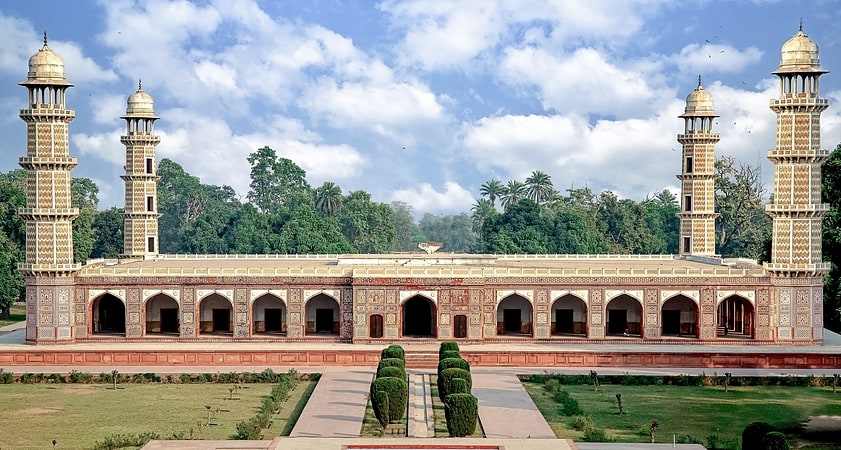
Also known as: مقبرہ جہانگیر
Historical mausoleum for an emperor. The Tomb of Jahangir is a 17th-century mausoleum built for the Mughal Emperor Jahangir. The mausoleum dates from 1637, and is located in Shahdara Bagh near city of Lahore, Pakistan, along the banks of the Ravi River. The site is famous for its interiors that are extensively embellished with frescoes and marble, and its exterior that is richly decorated with pietra dura. The tomb, along with the adjacent Akbari Sarai and the Tomb of Asif Khan, are part of an ensemble currently on the tentative list for UNESCO World Heritage status.[2]
Address: Circular Walk, Lahore
Lahore Fort
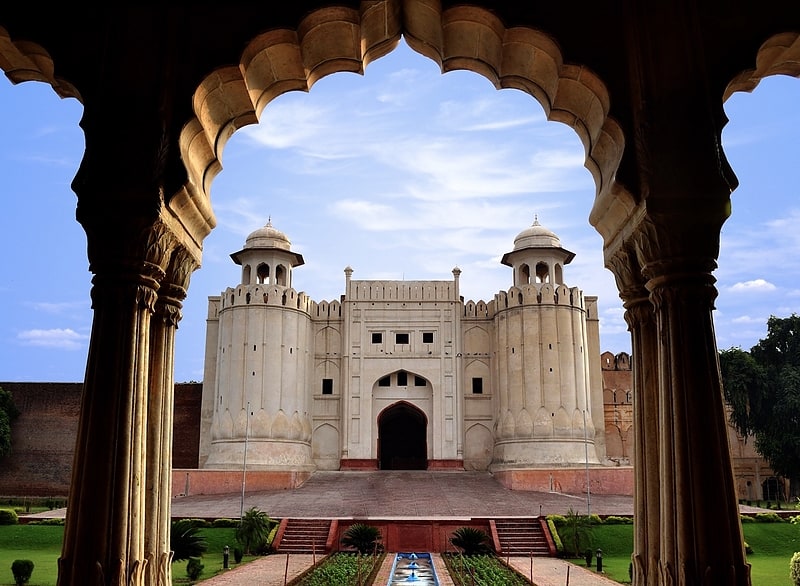
Also known as: قلعہ لاہور
Historical landmark in Lahore, Pakistan. The Lahore Fort is a citadel in the city of Lahore, Pakistan. The fortress is located at the northern end of walled city Lahore, and spreads over an area greater than 20 hectares. It contains 21 notable monuments, some of which date to the era of Emperor Akbar. The Lahore Fort is notable for having been almost entirely rebuilt in the 17th century, when the Mughal Empire was at the height of its splendour and opulence.
Though the site of the Lahore Fort has been inhabited for millennia, the first record of a fortified structure at the site was regarding an 11th-century mud-brick fort. The foundations of the modern Lahore Fort date to 1566 during the reign of Emperor Akbar, who bestowed the fort with a syncretic architectural style that featured both Islamic and Hindu motifs. Additions from the Shah Jahan period are characterized by luxurious marble with inlaid Persian floral designs, while the fort's grand and iconic Alamgiri Gate was constructed by the last of the great Mughal Emperors, Aurangzeb, and faces the renowned Badshahi Mosque.
After the fall of the Mughal Empire, Lahore Fort was used as the residence of Emperor Ranjit Singh, founder of the Sikh Empire. The Sikhs made several additions to the fort. It then passed to the control of the East India Company after they annexed Punjab following their victory over the Sikhs at the Battle of Gujrat in February 1849. In 1981, the fort was inscribed as a UNESCO World Heritage Site for its "outstanding repertoire" of Mughal monuments dating from the era when the empire was at its artistic and aesthetic zenith.[3]
Address: Fort Rd, Lahore
Badshahi Mosque
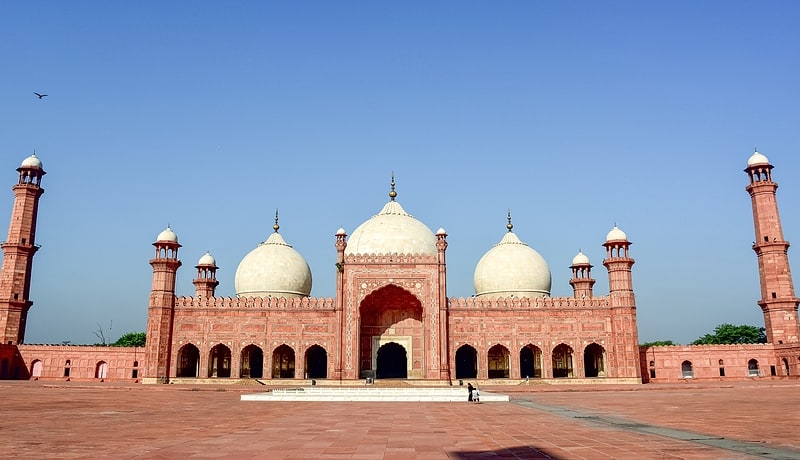
Also known as: بادشاہی مسجد
Prominent 17th-century domed mosque. The Badshahi Mosque is a Mughal-era congregational mosque in Lahore, capital of the Pakistani province of Punjab, Pakistan. The mosque is located west of Lahore Fort along the outskirts of the Walled City of Lahore, and is widely considered to be one of Lahore's most iconic landmarks.
The Badshahi Mosque was constructed by the Mughal emperor Aurangzeb between 1671 and 1673 and was the largest mosque in the world from 1673 to 1986. The mosque is an important example of Mughal architecture, with an exterior that is decorated with carved red sandstone with marble inlay. It remains the largest mosque of the Mughal-era, and is the third-largest mosque in Pakistan. After the fall of the Mughal Empire, the mosque was used as a garrison by the British Empire, and is now one of Pakistan's most iconic sights.[4]
Address: Shahi Mohalla, Lahore
Lahore Zoo

Also known as: لاہور چڑیا گھر
Sizable zoo with pony rides and a cafe. Lahore Zoo in Lahore, Punjab, Pakistan, established in 1872, one of the largest zoos in Pakistan. It is currently managed by the Forest, Wildlife and Fisheries department of the Government of Pakistan. Today the zoo houses a collection of about 1378 animals of 135 species. Lahore Zoo was the host of the fifth annual conference of SAZARC in 2004.
Lahore Zoo is thought to be the third or fourth oldest zoo in the world. House of Vienna Zoo of Austria, established in 1752 as a menagerie, was opened to public as a zoo in 1779. London Zoo of England, established in 1828, was opened to public in 1847. The Alipore Zoo of India, established some time in the early 19th century, was opened to public as a zoo in 1876.[5]
Address: 90 Mall Rd, 54000 Lahore
Lahore Museum
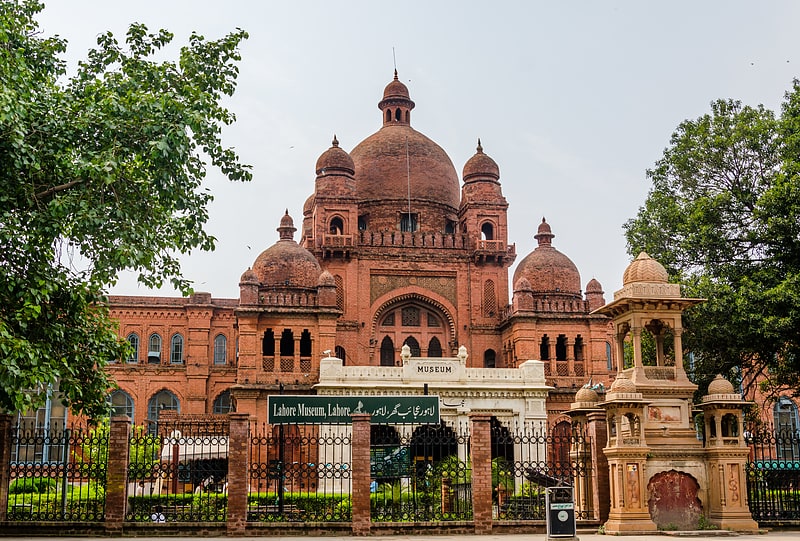
Also known as: عجائب گھر، لاہور
Museum in Lahore, Pakistan. The Lahore Museum, is a museum located in Lahore, Pakistan. Founded in 1865 at a smaller location and opened in 1894 at its current location on 'The Mall' in Lahore during the British colonial period, Lahore Museum is one of Pakistan's most visited museums and one of the major museums in South Asia.
The museum houses an extensive collection of Buddhist art from the ancient Indo-Greek and Gandhara kingdoms. It also has collections from the Mughal Empire, Sikh Empire and the British Empire in India.
The Lahore Wonder House, along with the Zamzama Gun located directly in front of the building, is the setting of the opening scene in the novel Kim by Rudyard Kipling, whose father was one of the museum's earliest curators.[6]
Address: Mall Rd, 44000 لاہور
Wazir Khan Mosque
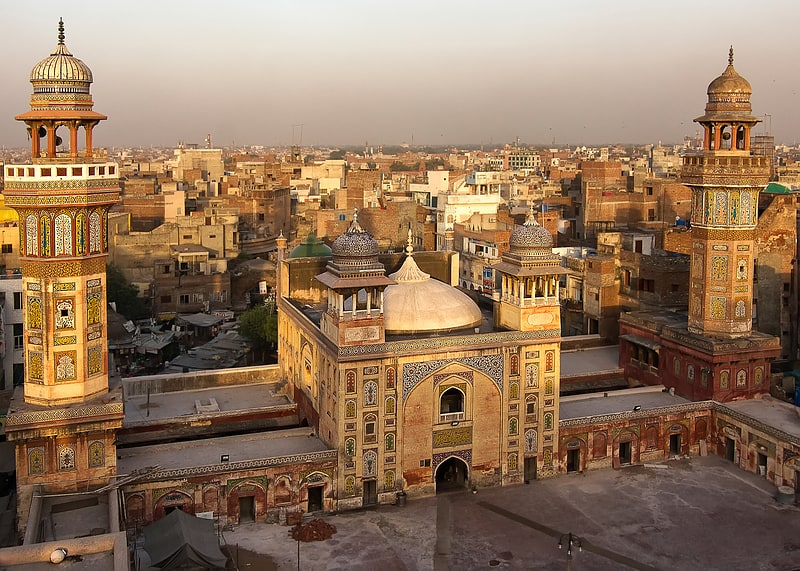
Also known as: مسجد وزیر خان
Mosque in Lahore, Pakistan. The Wazir Khan Mosque is a 17th-century mosque located in the city of Lahore, capital of the Pakistani province of Punjab. The mosque was commissioned during the reign of the Mughal Emperor Shah Jahan as a part of an ensemble of buildings that also included the nearby Shahi Hammam baths. Construction of Wazir Khan Mosque began in 1634 C.E. and was completed in 1641. It is on the UNESCO World Heritage Tentative List.
Considered to be the most ornately decorated Mughal-era mosque, Wazir Khan Mosque is renowned for its intricate faience tile work known as kashi-kari, as well as its interior surfaces that are almost entirely embellished with elaborate Mughal-era frescoes. The mosque has been under extensive restoration since 2009 under the direction of the Aga Khan Trust for Culture and the Government of Punjab, with contributions from the governments of Germany, Norway, and the United States.[7]
Address: Dabbi Bazar, Lahore
Data Darbar
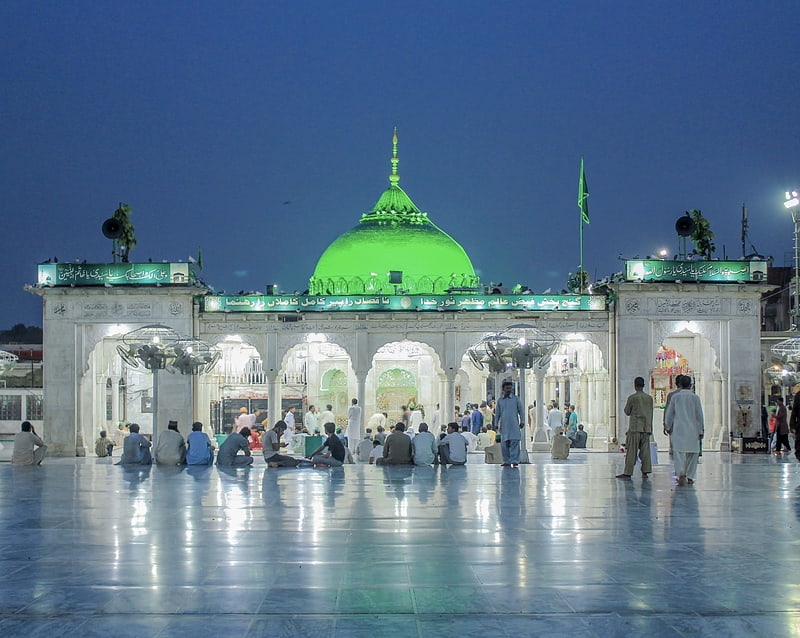
Also known as: داتا دربار
Shrine in Lahore, Pakistan. Data Darbar, located in the city of Lahore, Punjab, Pakistan, is the largest Sufi shrine in South Asia. It was built to house the remains of Ali Hujwiri, commonly known as Ganj Baksh, a Sufi saint from Ghazni in present-day Afghanistan, who is believed to have lived on the site in the 11th century CE.
The site is considered to be the most sacred place in Lahore, and attracts up to one million visitors to its annual urs festival.[8]
Address: Bilal Ganj, Lahore
Bagh-e-Jinnah
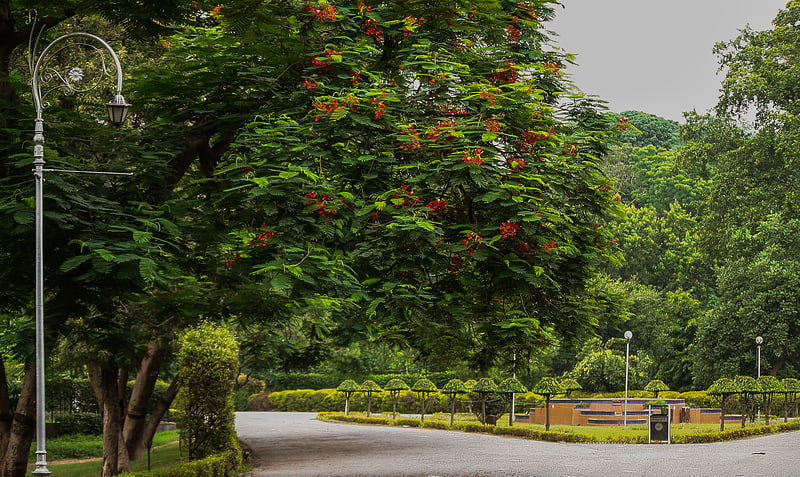
Also known as: باغ جناح
Park in Lahore, Pakistan. Bagh-e-Jinnah, formerly known as Lawrence Gardens, is a historical park in the city of Lahore, Pakistan. The large green space contains a botanical garden, Masjid Dar-ul-Islam, and Quaid-e-Azam Library
There are also entertainment and sports facilities within the park: an open-air theater, a restaurant, tennis courts and the Gymkhana Cricket Ground. It is located on Lawrence Road next to Lahore Zoo, directly across from the Governor's House on The Mall.[9]
Address: Mall Road - Old, 54000 لاہور
Minar-e-Pakistan
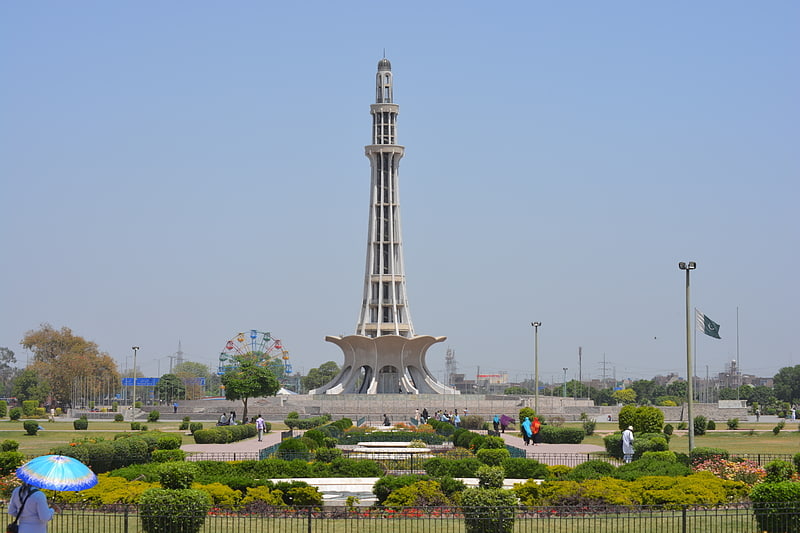
Also known as: مینار پاکستان
Monument to the Pakistan Resolution. Minar-e-Pakistan is a national monument located in Lahore, Pakistan. The tower was built between 1960 and 1968 on the site where the All-India Muslim League passed the Lahore Resolution on 23 March 1940 - the first official call for a separate and independent homeland for the Muslims of British India, as espoused by the two-nation theory. The resolution eventually helped lead to the emergence of an independent Pakistani state in 1947.
The tower is located in the middle of an urban park, called the Greater Iqbal Park.[10]
Address: Circular Rd, Lahore
Tomb of Allama Iqbal
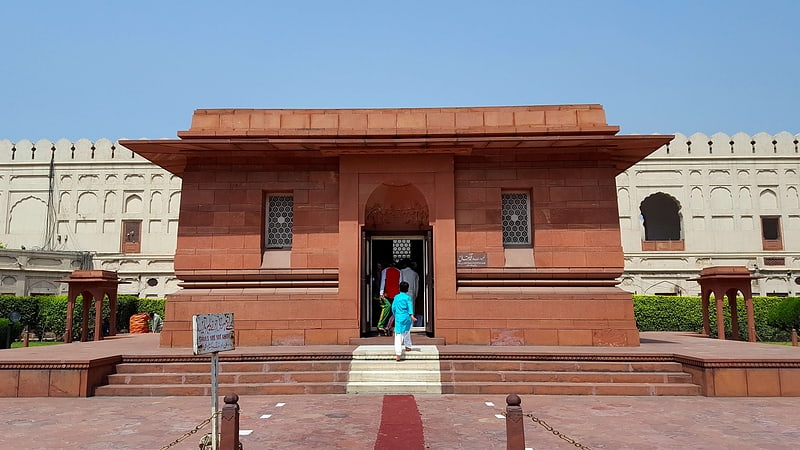
Also known as: مقبرہ علامہ اقبال
Shrine in Lahore, Pakistan. The Tomb of Allama Muhammad Iqbal, or Mazaar-e-Iqbal is a mausoleum located within the Hazuri Bagh, in the Pakistani city of Lahore, capital of Punjab province.[11]
Address: Shahi Mohallah Street, Lahore
Vogue Towers
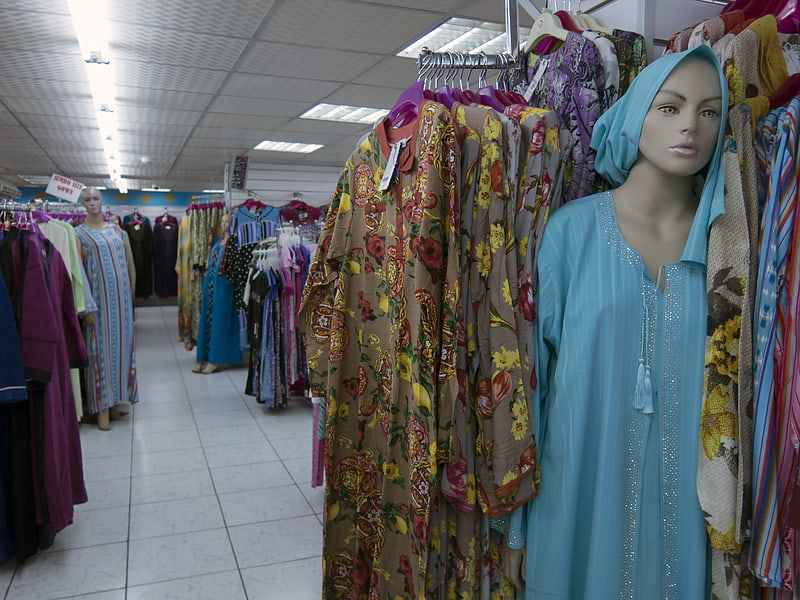
Shopping mall in Lahore, Pakistan
Address: 15 MM Alam Rd, 54000 Lahore
Tomb of Asif Khan

Also known as: مقبرہ آصف خان
Historical place in Pakistan. The Tomb of Asif Khan is a 17th-century mausoleum located in Shahdara Bagh, in the city of Lahore, Punjab. It was built for the Mughal statesman Mirza Abul Hassan Jah, who was titled Asif Khan. Asif Khan was brother of Nur Jahan, and brother-in-law to the Mughal Emperor Jahangir. Asif Khan's tomb is located adjacent to the Tomb of Jahangir, and near the Tomb of Nur Jahan. Asif Khan's tomb was built in a Central Asian architectural style, and stands in the centre of a Persian-style Charbagh garden.[12]
Address: Band Road Shahdara Town, Lahore
Tomb of Nur Jahan
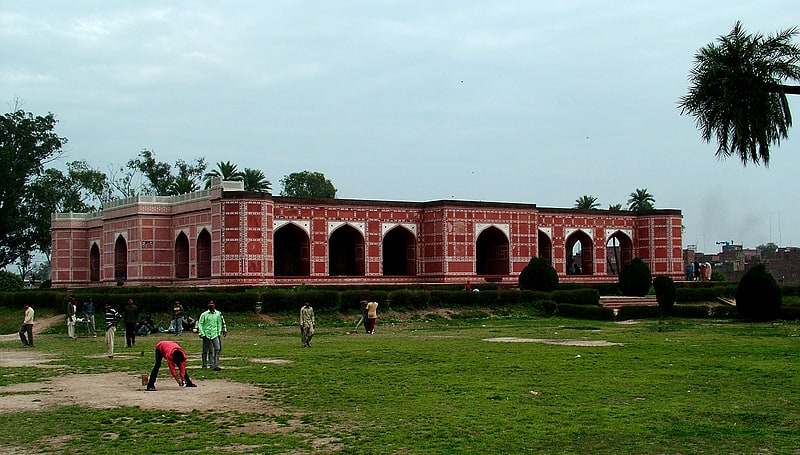
Also known as: مقبرہ نور جہاں
Historical place in Pakistan. The Tomb of Nur Jahan is a 17th-century mausoleum in Lahore, Pakistan, that was built for the Mughal empress Nur Jahan. The tomb's marble was plundered during the Sikh era in 18th century for use at the Golden Temple in Amritsar. The red sandstone mausoleum, along with the nearby tomb of Jahangir, tomb of Asif Khan, and Akbari Sarai, forms part of an ensemble of Mughal monuments in Lahore's Shahdara Bagh.[13]
Address: Grand Trunk Road, Lahore
Greater Iqbal Park
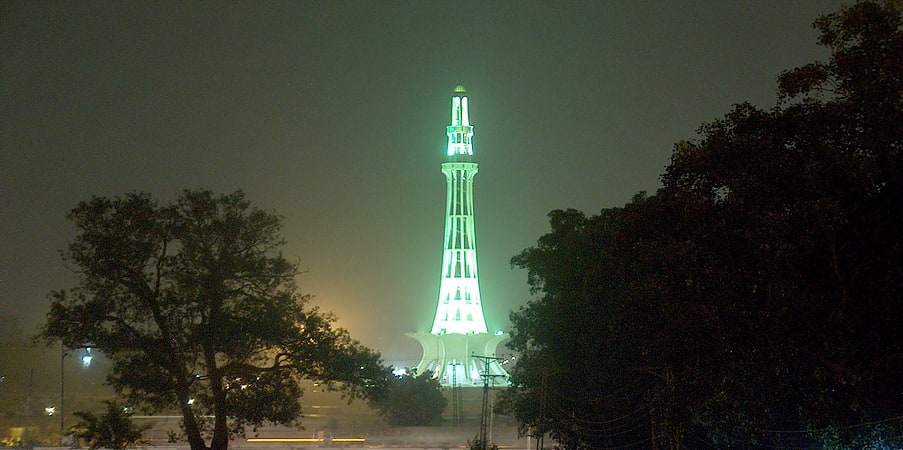
Also known as: اقبال پارک
Park in Lahore, Pakistan. Greater Iqbal Park, formerly Minto Park, is an urban park located in the outskirts of the Walled City in Lahore, Pakistan. Before current renovations and expansion its name was Iqbal Park. Noted as the home of Minar-e-Pakistan, the 329-acre park includes an artificial lake which spreads over four acres which includes an 800-feet-long musical fountain. Other attractions includes a two-kilometre-long soft rail, a library, an open-air gym and a food court. The tombs of Allama Iqbal and Hafeez Jalandhari are also located in the park.[14]
Samadhi of Ranjit Singh
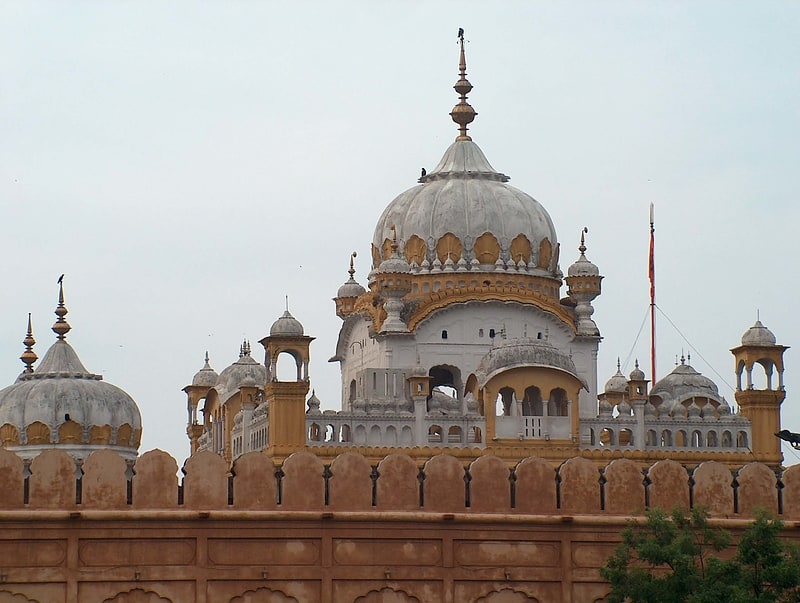
Also known as: رنجیت سنگھ کی سمادھی
Building in Lahore, Pakistan. The Samadhi of Ranjit Singh is a 19th-century building in Lahore, Pakistan that houses the funerary urns of the Sikh Maharaja Ranjit Singh. It is located adjacent the Lahore Fort and Badshahi Mosque, as well the Gurdwara Dera Sahib which marks the spot where the 5th guru of Sikhism, Guru Arjan Dev, died. Its construction was started by his son and successor Maharaja Kharak Singh after the ruler's death in 1839, and completed nine years later. It overlooks the Hazuri Bagh, which was built by Ranjit Singh, to its south.[15]
Address: Circular Road, Lahore
Hazuri Bagh
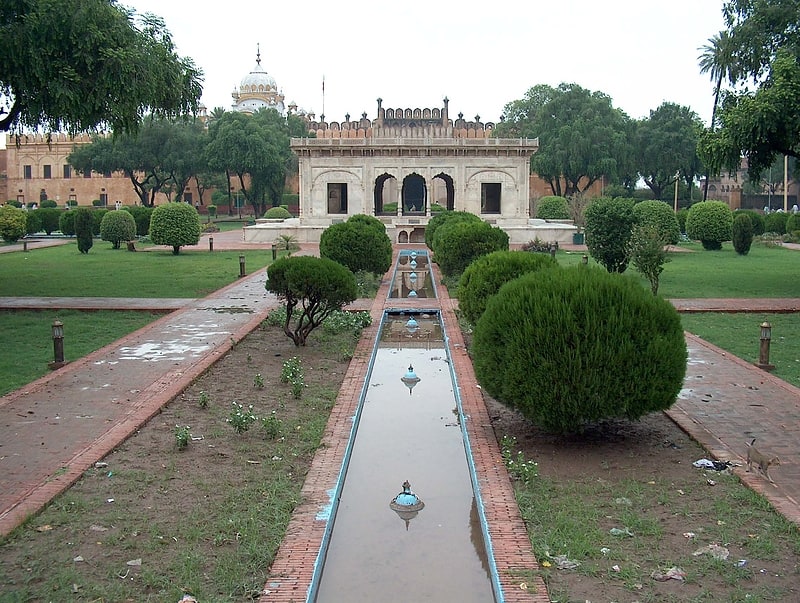
Also known as: حضوری باغ
Garden in Lahore, Pakistan. Hazuri Bagh is a garden in Lahore, Punjab, Pakistan, bounded by the Lahore Fort to the east, Badshahi Mosque to the west, the Samadhi of Ranjit Singh to the north, and the Roshnai Gate to the south. The garden was built during the reign of Maharaja Ranjit Singh. In the centre of the garden stands the Hazuri Bagh Baradari, built by the Maharaja in 1818 to celebrate his capture of the Koh-i-Noor diamond from Shuja Shah Durrani in 1813. The Serai Alamgiri caravanserai formerly stood where Hazuri Bagh is now located.[16]
Address: Shahi Mohallah Street, Lahore
Moti Masjid
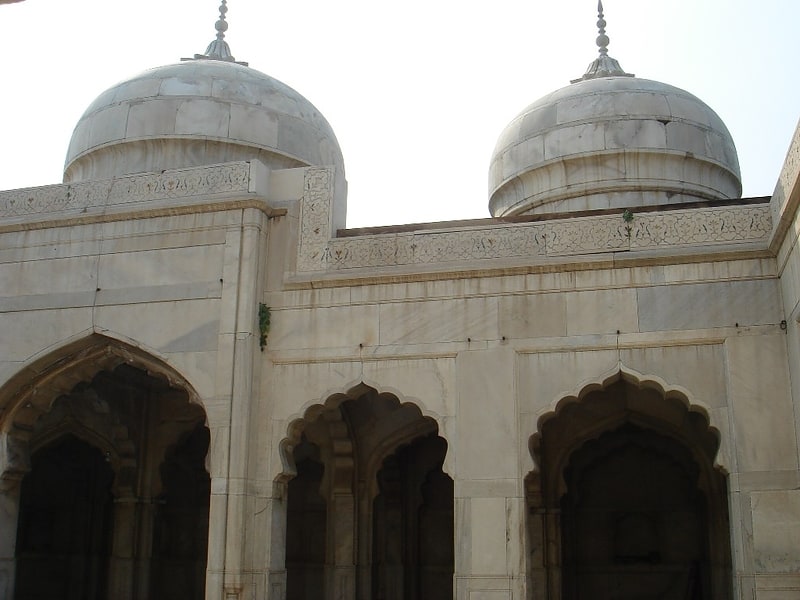
Also known as: موتی مسجد
Mosque in Lahore, Pakistan. Moti Masjid, one of the "Pearl Mosques", is a 17th-century religious building located inside the Lahore Fort, Lahore, Punjab, Pakistan. It is a small, white marble structure built by Mughal emperor Jahangir and modified by the architects of Shah Jahan, and is among his prominent extensions to the Lahore Fort Complex. The mosque is located on the western side of Lahore Fort, closer to Alamgiri Gate, the main entrance.[17]
Sunehri Mosque
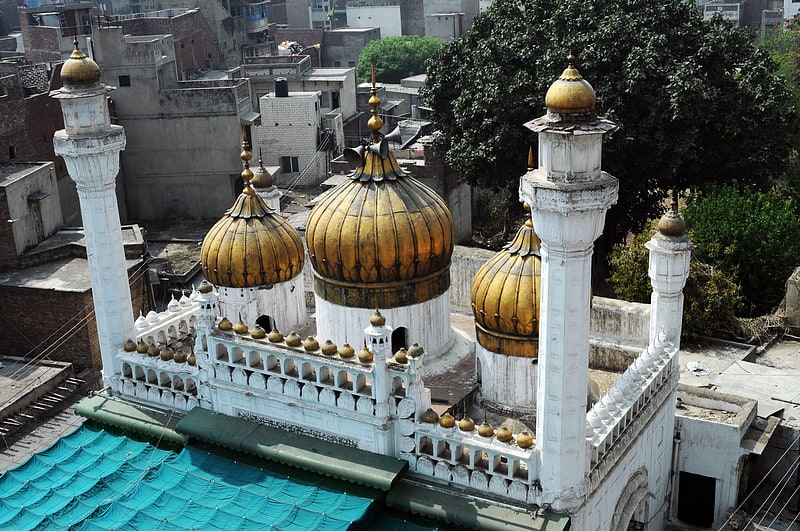
Also known as: سنہری مسجد
Mosque in Lahore, Pakistan. The Sunheri Mosque, also known as the Talai Mosque, is a late Mughal architecture-era mosque in the Walled City of Lahore, capital of the Pakistani province of Punjab.[18]
Address: Dabbi Bazar, Lahore
Begum Shahi Mosque
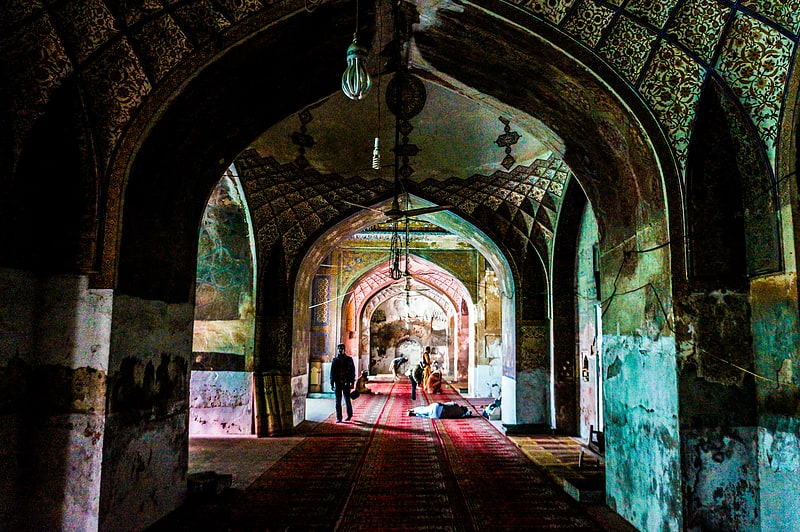
Also known as: مریم زمانی بیگم مسجد
Mosque in Lahore, Pakistan. Begum Shahi Mosque, officially The Mosque of Mariyam Zamani Begum, is an early 17th-century mosque situated in the Walled City of Lahore, Punjab, Pakistan. The mosque was built between 1611 and 1614 during the reign of Mughal Emperor Jahangir in honor of his mother, Wali Nimat Mariam-uz-Zamani Begum Sahiba, chief consort of Emperor Akbar.
It is Lahore's earliest surviving example of a Mughal-era mosque, and influenced construction of the larger Wazir Khan Mosque a few decades later. The foundation as stated by one of the inscriptions on the mosque was laid by the Dowager Empress Wali Nimat Mariam-uz-Zamani Begum Sahiba herself in the year 1611. This mosque was turned in name of the most celebrated Sikh hero Bhai Mani Singh Ji, as Shaheed Ganj Bhai Mani Singh, under the Sikh rule. The mosque has been encroached upon by several shops, and views of the mosque from the Akbari Gate of the Lahore Fort have been obstructed by illegally constructed tire shops. In July 2016, the Walled City of Lahore Authority announced that the shops would be removed, and the mosque would also be conserved and restored.[19]
Race Course Park
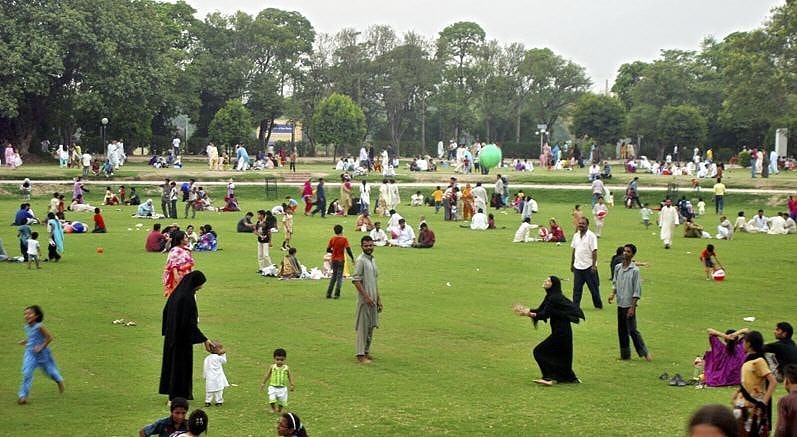
Also known as: جیلانی پارک
Jilani Park is located in the city of Lahore, Punjab, Pakistan. It is on the Jail Road in front of the Services Hospital. It is famous for its floral exhibitions and artificial waterfall. Annual horse racing competitions are held in this park. There is also a famous restaurant inside the park called 'Polo Lounge'. It is named after Ghulam Jilani Khan.[20]
Address: G.O.R. - 1, 54000 لاہور
Grand Jamia Mosque
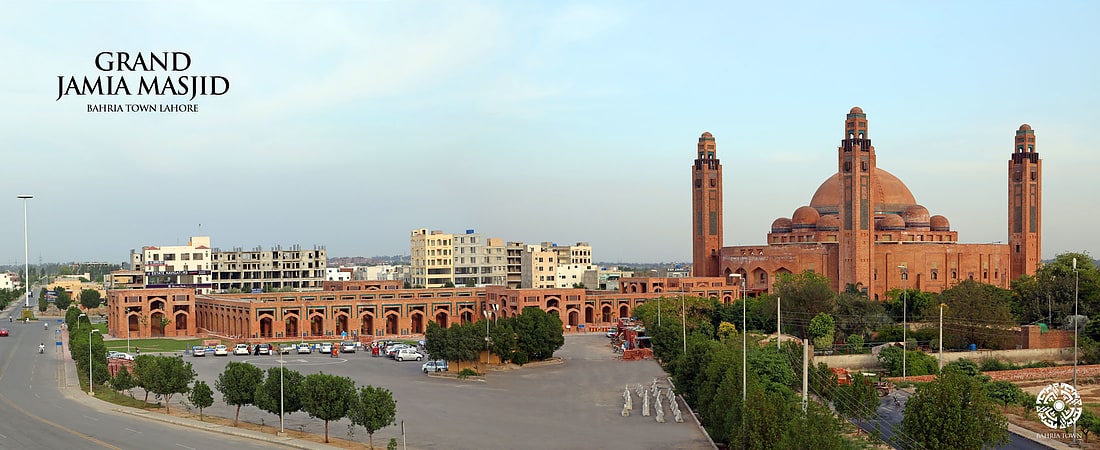
Also known as: گرینڈ جامع مسجد
Mosque in Lahore, Pakistan. Grand Jamia Mosque Lahore also known as Bahria Grand Mosque is a mosque located in Bahria Town, Lahore, Pakistan. With a capacity of 70,000 worshippers, it is the third largest mosque in Pakistan and the fourteenth largest mosque in the world.
Designed by Nayyar Ali Dada, it was inaugurated on Eid al-Adha on 6 October 2014. It can accommodate 25,000 worshipers indoors, while the courtyard and corridor leading to the main halls of worship can accommodate a total of 70,000. The architecture is influenced by Badshahi Masjid, Wazir Khan Mosque and Sheikh Zayed Mosque, with construction costs of over 4 billion rupees (or approximately $39 million).
The structure comprises four minarets, each 165 ft tall, and a grand dome, which is surrounded by 20 smaller domes. The exterior is surfaced with 4 million handmade Multani tiles. The interior is decorated with custom-made carpets imported from Turkey and over 50 chandeliers imported from Iran. One of the floors consists of an Islamic heritage museum displaying rare Quranic collections, an Islamic library and also an Islamic art gallery with various antique artifacts. Over four million Multani handcrafted mosaic tiles cover the surface area of the mosque.[21]
Alhamra Arts Council
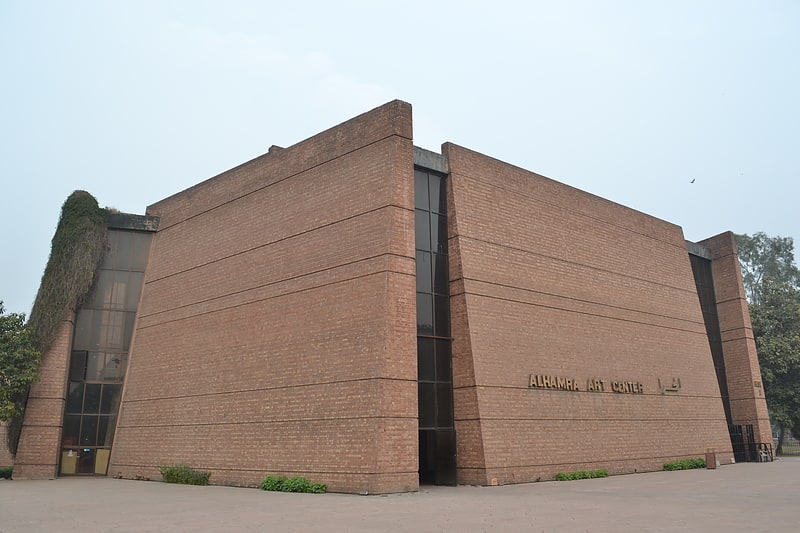
Also known as: الحمرا آرٹس کونسل
Auditorium in Lahore, Pakistan. Alhamra Arts Council was designed by Nayyar Ali Dada and completed in 1992.
The Alhamra Arts Council is located on a colonial-period road in Lahore, Pakistan, that was formerly known as Mall Road and has been renamed as Shahrah Quaid-e-Azam. The origins of the arts complex lie in an initial commission of Nayyar Ali Dada to design a 1000-seat auditorium for the Alhamra Arts Council, of which he was a member. The AAC had been given the site by the government in the years immediately following independence but had generally staged its performances outdoors. The auditorium was completed in 1979 and replaced some temporary buildings.
A further three phases of construction followed that of the auditorium. There were commissioned from Dada by the Lahore Arts Council, a government agency that took over the project from the non-governmental Alhamra Arts Council following a dispute concerning ownership of the land. The first of these phases was completed in 1984 and consisted of offices and art galleries housed in four octagonal structures. In the following year, a 450-seat theatre in hexagonal form was added to the existing auditorium and, in 1992, an octagonal 250-seat facility for lectures and recitals was completed. The buildings are placed in a manner that creates semi-enclosed courtyards and the various polygonal shapes in their design are intended to enhance acoustics when used for performances.
The structures are influenced by Mughal architecture and are constructed using a veneer of handmade red bricks overlaying a concrete form. The bricks are bonded with a local mortar and reflect the construction of the historic Lahore Fort and Badshahi Mosque, as well as the red sandstone that was favoured by the Mughals.
The design was a winner of the Aga Khan Award for Architecture in 1998, when the jury described it as "a rare example of flexible spaces that has enabled several additions to be made over time, each of which has in turn enhanced, rather than detracted from, its overall architectural value.[22]
Shrine of Shah Jamal

Also known as: شاه جمال درگاه
Shrine in Lahore, Pakistan. The Tomb of Shah Jamal is the tomb of Sufi Saint Baba Shah Jamal. It is located in Lahore, Punjab, Pakistan. It can be located opposite Forman Christian College, near Muslim Town. There is a masjid built around the tomb which incorporates a graveyard.[23]
Summit Minar

Also known as: اسلامی سمٹ مینار
The Summit Minar is an obelisk-shaped structure built in the centre of Charing Cross, Mall Road in the city of Lahore, Punjab the province of Pakistan. It was built to commemorate the second Islamic Summit Conference held in Lahore in 1974. Its foundation stone was laid on 22 February 1974 on the first anniversary of the conference. It is 155 feet high.[24]
Sheesh Mahal
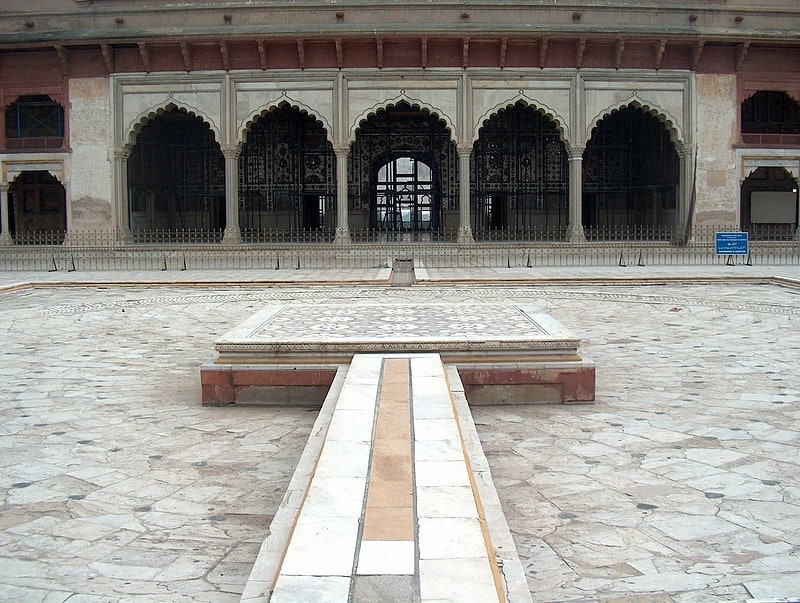
Also known as: شیش محل
Historical landmark in Lahore, Pakistan. The Sheesh Mahal is located within the Shah Burj block in northern-western corner of Lahore Fort. It was constructed under the reign of Mughal Emperor Shah Jahan in 1631–32, with some additions later under Sikh Maharaja Ranjit Singh. The ornate white marble pavilion is inlaid with pietra dura and complex mirror-work of the finest quality. The hall was reserved for personal use by the imperial family and close aides. It is among the 21 monuments that were built by successive Mughal emperors inside Lahore Fort, and forms the "jewel in the Fort’s crown." As part of the larger Lahore Fort Complex, it has been inscribed as a UNESCO World Heritage Site since 1981.[25]
Sacred Heart Cathedral
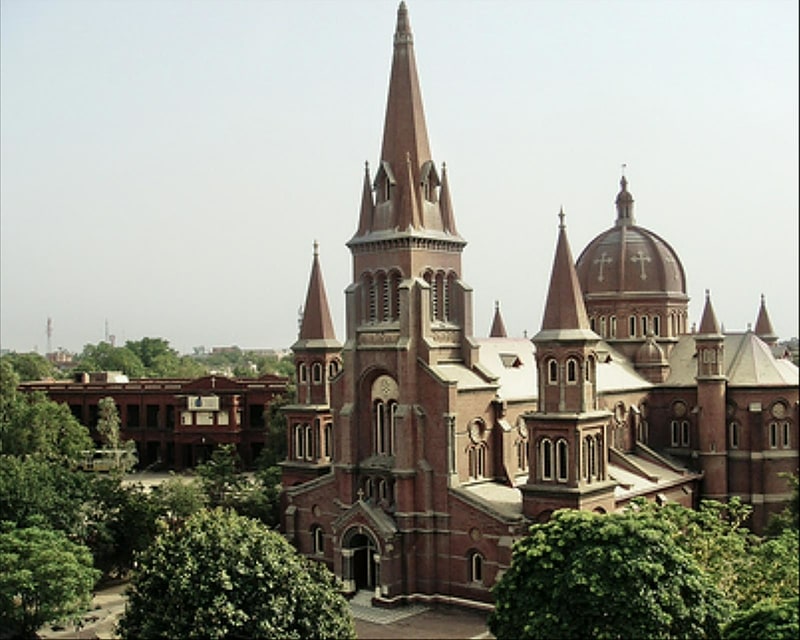
Also known as: سیکرڈ ہارٹ کیتھڈرل، لاہور
Sacred Heart Cathedral is the seat of the Roman Catholic Archdiocese of Lahore, located in Lahore, Punjab, Pakistan. Built at the behest of bishop Godefroid Pelckmans with Belgian aid and materials, the cathedral was consecrated by Bishop Fabian Eestermans, the Bishop of Lahore, on 19 November 1907. Its roots lie in the historical presence of the Belgian Capuchins in Pakistan. The design of this Cathedral was made according to the Roman Byzantine-style by Belgian architect, Edouard Dobbeleers of Antwerp.[26]
Gulshan-e-Iqbal Park
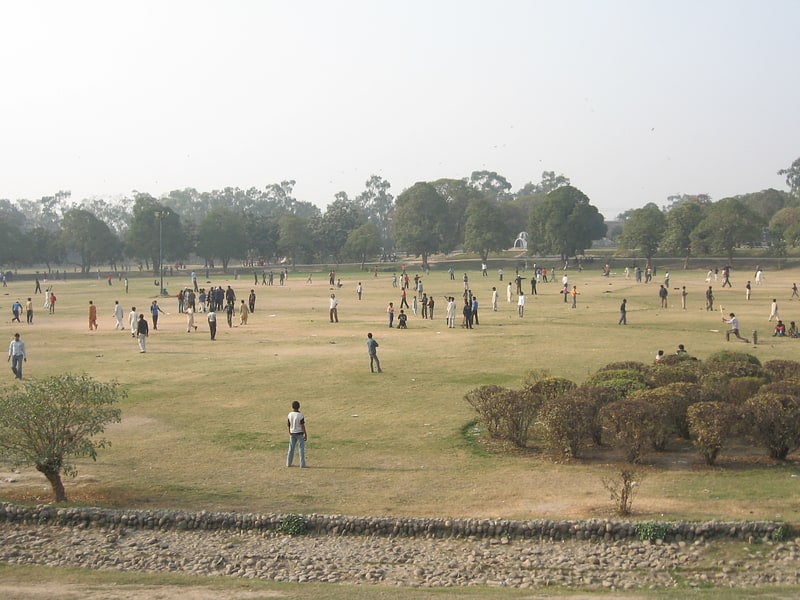
Also known as: گلشن اقبال پارک
Park in Lahore, Pakistan. The Gulshan-e-Iqbal Park is a large park and recreational space in Lahore, Pakistan. With an area of over 67 acres, the park is one of the largest in the city. It is situated in the suburban locality of Allama Iqbal Town. The name Gulshan-e-Iqbal is literally translated as "the garden of Iqbal," referring to Iqbal, the national poet of Pakistan. It has many recreational rides for children and adults making it a popular venue for families. It also features a vast artificial lake and a mini-zoo.
The park had some issues regarding security. The park is well maintained by the local council, with new playing areas and rides being added recently due to increased public interest.[27]
Address: Iqbal Park Rd, Lahore
Army Museum Lahore
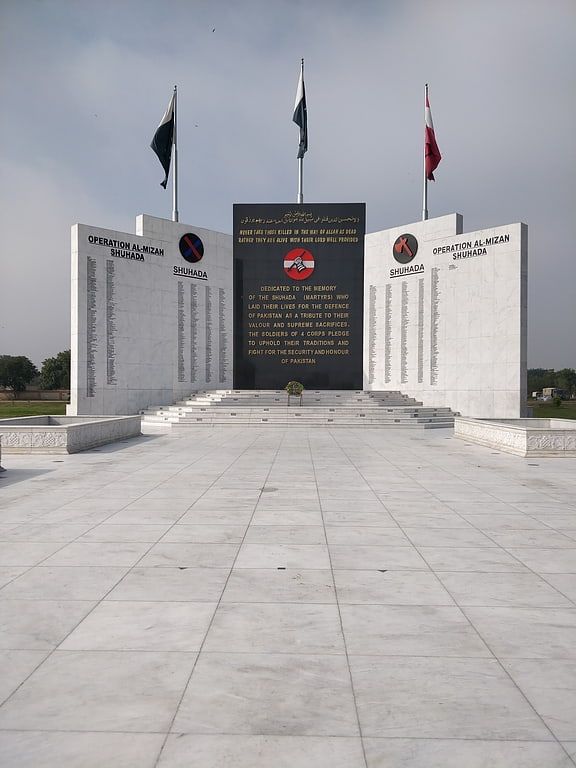
Army Museum Lahore is a museum located in Lahore documenting the military history of the Pakistan Army. Established in 2017, it is based on Lahore Cantonment land opposite Lahore Airport. The museum is Pakistan's second largest collection of military objects in the country. The collection highlights the Military history of Pakistan, from the 16th century Mughal Empire to the modern day Pakistan.[28]
Shab Bhar Mosque
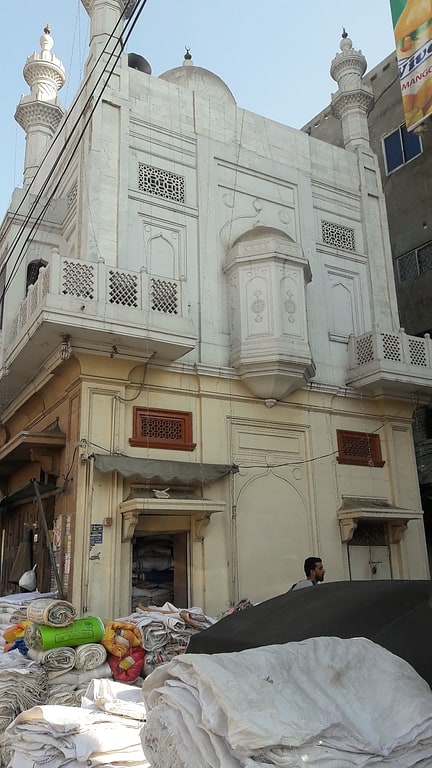
Also known as: مسجد شب بھر
Mosque in Lahore, Pakistan. The Shab Bhar Mosque is a colonial era mosque in the Shah Alami neighbourhood of Lahore, Pakistan. The mosque is said to have been built overnight, following a dispute between local Hindus and Muslims in 1917.[29]
Fakir Khana
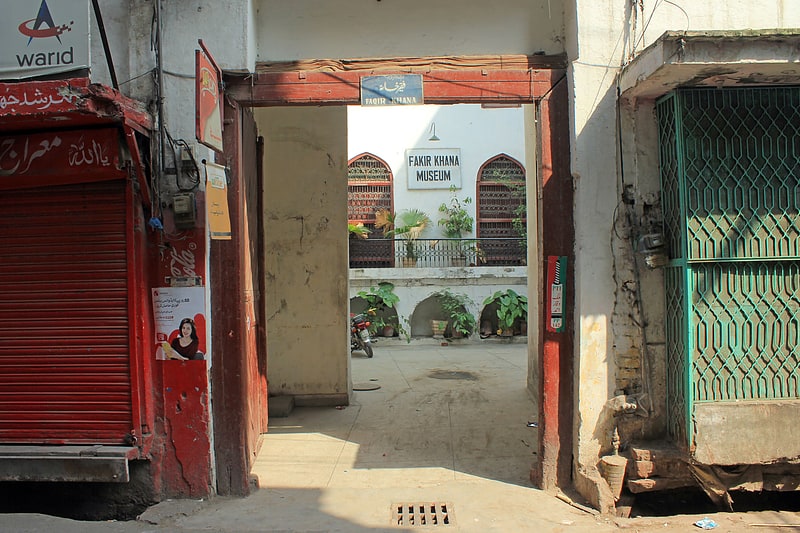
Also known as: فقیر خانہ
Museum in Lahore, Pakistan. Fakir Khana is a private museum and house located in Lahore, Pakistan, owned by the Fakir family. Fakhir Khana contains over 20,000 objects, and is the largest privately owned museum in South Asia.[30]
Gurdwara Dera Sahib
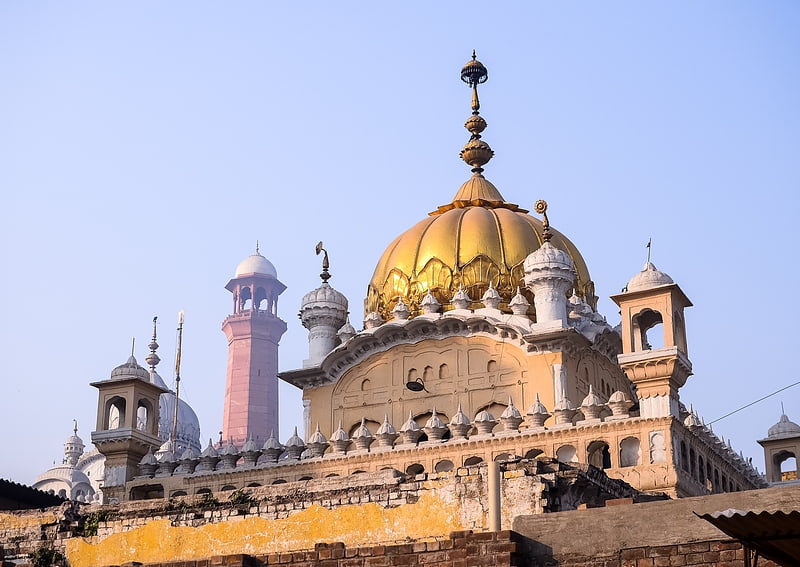
Gurdwara Dera Sahib is a gurudwara in Lahore, Pakistan, which commemorates the spot where the 5th guru of Sikhism, Guru Arjan Dev, was martyred in 1606.[31]
Lahore International Expo Centre
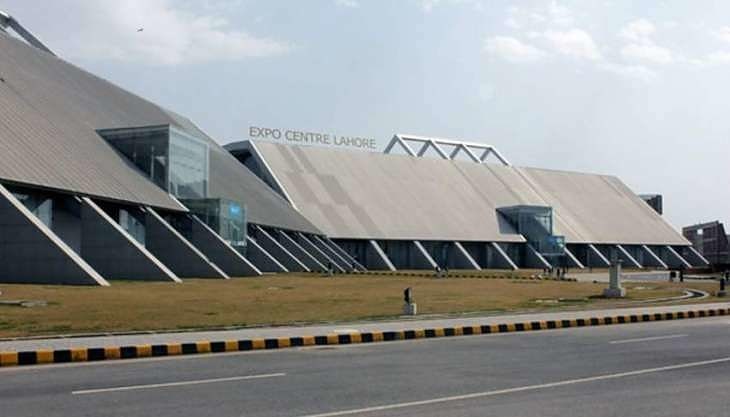
Also known as: ایکسپو سینٹر لاہور
Expo Centre Lahore is a 4,000-square-metre convention center located in Lahore, Punjab, Pakistan. Designed by joint venture of National Engineering Services Pakistan and Nayyar Ali Dada & Associates, the convention center is located in Johar Town at the corner of Abdul Haque Road and Shahrah Nazaria-e-Pakistan. Construction began in 2007 and was completed in 2010.[32]
Address: Phase II Johar Town, Lahore
National Museum of Science and Technology

Also known as: قومی عجائب گھر برائے سائنس و ٹیکنالوجی، لاہور
Museum in Lahore, Pakistan. The National Museum of Science and Technology, Lahore is a museum in Lahore, Pakistan.
The museum was founded in 1965 and is a non-profit, permanent institution in the service of society, open to the public, which exhibits the tangible and intangible heritage of humanity and its environment for the purpose of education of the public.
Since its establishment in 1965, the National Museum of Science and Technology has served as Pakistan's only national-level science and technology museum. Initially it was meant only for the University of Engineering & Technology students. Later in 1976, it was opened to the public. In a spirit of service to the public, this museum has continually improved and enhanced its functions as a museum of science and technology. Exhibits and its galleries went through four phases of expansion. The Museum became an attached department of Science and Education Department, Punjab in the wake of the 18th amendment to the Constitution of Pakistan in 2011. In 2011, this museum in Lahore had nearly 100,000 visitors.[33]
Address: UET Grand Trunk Road, Lahore
Istanbul Square
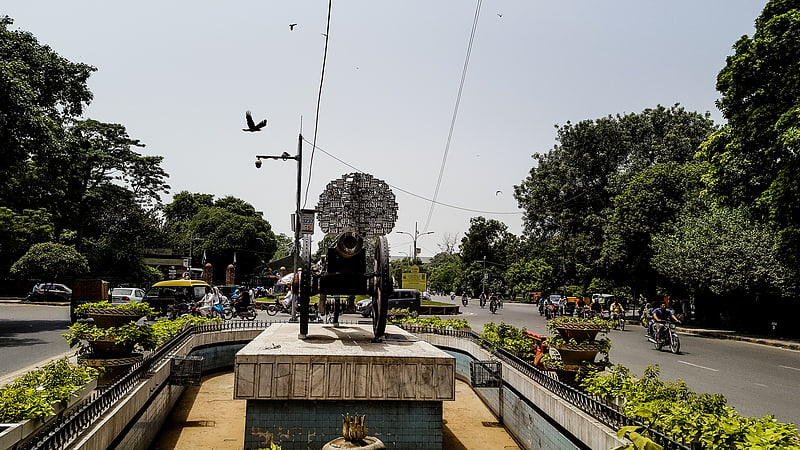
Istanbul Square is a roundabout at the intersection of Mall Road and Prof. Ashfaq Ali Khan Road in the heart of Lahore, Pakistan. It is named after Istanbul, Turkey, the sister city of Lahore.
The square was designed by architects from Punjab University, University of Engineering and Technology, the National College of Arts and the Alama Iqbal Campus of the University of the Punjab. The new design has a tall pole in the middle of the square with hundreds of small birdhouses on it. Mainly pigeons use these houses and the city folk come to feed these pigeons. The square was already called Istanbul Chowk; however it had no special design and only had a boat fixed to it.[34]